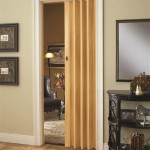```html
Interior Molding Styles: A Comprehensive Guide
Interior molding, often referred to as millwork, is a significant architectural detail that enhances the visual appeal and character of a space. More than just a decorative element, molding serves a practical purpose by concealing gaps, protecting walls, and adding a finished look to rooms. Understanding the various styles of interior molding allows homeowners and designers to make informed decisions, ensuring a cohesive and aesthetically pleasing design.
The selection of molding styles should complement the architectural style of the building and the personal preferences of the inhabitants. Whether the goal is to achieve a classic, modern, or eclectic ambiance, the right molding can dramatically impact the overall look and feel of a room. This article provides a detailed overview of common interior molding styles, their characteristics, and their appropriate applications.
Understanding Common Interior Molding Types
Interior molding encompasses a variety of profiles, each serving a distinct purpose. The common types include baseboard, crown molding, chair rail, picture rail, casing, and wainscoting. Each type has its own set of styles and materials, allowing for considerable design flexibility.
Baseboard: Baseboard molding runs along the bottom of the wall, where it meets the floor. Its primary function is to protect the wall from kicks and impacts, as well as to conceal the joint between the wall and the flooring. Baseboard styles range from simple, flat profiles in modern homes to more ornate, multi-layered designs in traditional settings.
Crown Molding: Crown molding is installed at the intersection of the wall and ceiling. It adds a decorative touch, making the room appear more finished and elegant. Crown molding styles vary widely, from simple coves to elaborate designs with multiple tiers and intricacies. The size and complexity of crown molding should be proportional to the room's dimensions; larger rooms can accommodate more substantial crown molding, while smaller rooms benefit from simpler designs.
Chair Rail: Chair rail is a horizontal molding installed at approximately chair-height along the wall. It serves to protect the wall from damage caused by chair backs and to add a decorative element. Chair rail is often used in dining rooms and hallways, but can be incorporated into any room where wall protection is desired. The space below the chair rail is often painted a different color or covered in wallpaper, creating visual interest.
Picture Rail: Picture rail is a molding installed near the ceiling, designed for hanging pictures without damaging the walls. It provides a convenient and flexible way to display artwork and photographs. Picture rail is particularly useful in historic homes where preserving the original plaster walls is a priority.
Casing: Casing is the molding that surrounds doors and windows. It frames these openings, adding a decorative touch and concealing the gap between the wall and the door or window frame. Casing styles range from simple, clean lines in contemporary homes to more ornate, fluted designs in traditional settings. The width and profile of the casing should be consistent throughout the house to create a unified look.
Wainscoting: Wainscoting refers to decorative paneling that covers the lower portion of a wall. It can be made from wood, MDF, or other materials, and comes in a variety of styles, including raised panel, flat panel, beadboard, and board and batten. Wainscoting adds texture and visual interest to a room, and can also provide insulation and soundproofing. It is commonly used in dining rooms, hallways, and bathrooms.
Exploring Key Interior Molding Styles
Within the broad categories of molding types, many distinct styles exist, each with its own unique characteristics and historical context. Some of the most popular include Colonial, Victorian, Craftsman, and Modern.
Colonial: Colonial molding is characterized by its balanced and symmetrical design. It often features simple, elegant profiles with subtle curves and details. Colonial baseboards are typically tall and feature a rounded top edge. Colonial crown molding is often a simple cove shape or a combination of smaller moldings to create a more substantial effect. Colonial casing is typically flat with a simple bead or ogee edge.
Victorian: Victorian molding is known for its elaborate and ornate detailing. It often features deep profiles, intricate carvings, and multiple layers. Victorian baseboards are typically tall and feature multiple tiers and decorative elements. Victorian crown molding is often very elaborate, with multiple curves, scrolls, and other decorative details. Victorian casing is typically wide and ornate, with fluted pilasters and decorative corner blocks.
Craftsman: Craftsman molding is characterized by its simple, clean lines and emphasis on natural materials. It often features flat profiles and minimal ornamentation. Craftsman baseboards are typically short and wide, with a simple, square profile. Craftsman crown molding is often a simple, flat board or a shallow cove shape. Craftsman casing is typically flat and wide, with a simple, square edge.
Modern: Modern molding is distinguished by its minimalist design and focus on functionality. It often features clean lines, geometric shapes, and a lack of ornamentation. Modern baseboards are typically short and flat, with a simple, square profile. Modern crown molding is often omitted altogether or replaced with a simple shadow gap. Modern casing is typically flat and narrow, with a simple, square edge.
Beyond these main styles, other variations exist, such as Georgian, Art Deco, and contemporary styles that blend elements from different periods. The key is to choose a style that complements the overall design aesthetic of the home.
Considerations for Choosing Interior Molding
Selecting the appropriate interior molding involves considering several factors, including the architectural style of the building, the size and proportions of the rooms, the desired aesthetic, and the budget. Careful planning and attention to detail are essential for achieving a cohesive and visually appealing result.
Architectural Style: The architectural style of the building is a primary consideration when choosing interior molding. Matching the molding style to the architectural style helps to maintain the historical integrity of the building and create a cohesive look. For example, a Victorian-era home would benefit from ornate Victorian-style molding, while a mid-century modern home would be better suited to simple, minimalist molding.
Room Size and Proportions: The size and proportions of the rooms should also be taken into account. Larger rooms can accommodate more substantial molding, while smaller rooms benefit from simpler designs. Tall ceilings allow for taller baseboards and more elaborate crown molding. Low ceilings require smaller, less ornate molding to avoid overwhelming the space. The goal is to create a sense of balance and harmony between the molding and the room's dimensions.
Desired Aesthetic: The homeowner's personal preferences and desired aesthetic play a significant role in the selection of interior molding. Whether the goal is to create a classic, modern, or eclectic ambiance, the molding should reflect the overall design vision. Consider the color palette, furniture style, and other decorative elements when choosing molding. The molding should complement these elements and contribute to the overall aesthetic.
Budget: The budget is an important consideration when choosing interior molding. Molding materials range in price from inexpensive MDF to more expensive solid wood. The complexity of the molding design also affects the cost. Simple, flat profiles are typically less expensive than ornate, multi-layered designs. It is important to balance the desired aesthetic with the available budget and to prioritize quality over quantity when necessary.
In addition to these factors, it is also important to consider the installation process. Some molding styles are easier to install than others, and professional installation may be required for more complex designs. Proper installation is essential for achieving a professional-looking result and ensuring the longevity of the molding.
Furthermore, the material selection impacts the final look and durability. Wood offers a classic and warm aesthetic, but requires more maintenance. MDF is a cost-effective alternative that is resistant to warping and splitting. Polyurethane molding is lightweight and moisture-resistant, making it suitable for bathrooms and kitchens.
By carefully considering these factors, homeowners and designers can choose the right interior molding to enhance the beauty and value of their homes. The proper selection and installation of molding can transform a space, adding character, elegance, and a finished look that elevates the overall design.
```
The Best Builder Upgrades You May Not Have Considered Home Builders Decor House Interior

A Comprehensive Guide To Home Interior Trim And Moulding

A Comprehensive Guide To Home Interior Trim And Moulding

Doorway Molding Design Ideas House Driven By Decor Moldings And Trim

Wall Moulding Types And Design Ideas

Four Historically Accurate Molding Styles Compared Side By Home Decor Remodeling House Design

3d Molding Interior Design S Browse 12 719 Stock Photos Vectors And Adobe

Moulding Design Guide Kuiken Brothers

Federal Style Moulding Package Whole House Interior Elevation Ideas Featuring Kuiken Brothers Classical

Timeless Wall Moulding Designs To Elevate Your Space Beautiful Homes








